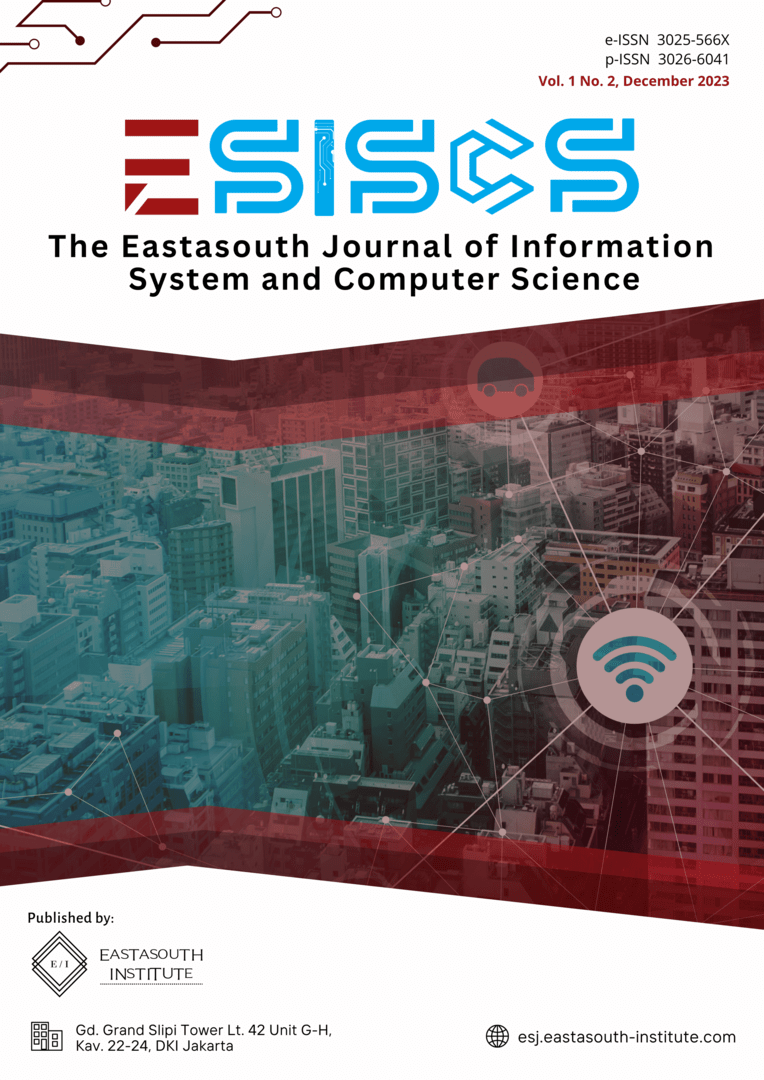Cognitive Cyber Defense: AI–MIS Integration through Big Data and Cloud Frameworks for Next-Generation Digital Resilience
Main Article Content
Abstract
The rapid rise in cyber threats across linked global digital ecosystems calls for a unified, intelligence-based defense strategy that brings together cybersecurity, management information systems (MIS), big-data analytics, and flexible IT governance. This study builds on the work of Kaur et al. (2023), Hasan et al. (2023), Mahmud et al. (2023), and Das et al. (2023) to create a comprehensive framework that uses artificial intelligence (AI), cloud computing, and data-driven decision-making to make digital systems more resilient. The research formulates an integrated AI–MIS Cyber-Defense Framework via a meta-synthesis of present empirical studies, clarifying the interaction among machine-learning analytics, predictive threat intelligence, and adaptive governance feedback loops. These interdependencies together improve the accuracy of detection, the ability to understand the issue in context, and the ability of organizations to adjust in unstable cyber environments. Quantitative evaluation shows that the system works better than traditional control systems. The average detection area under the curve (AUC) is over 0.93, the precision–recall metrics are above 0.90, and the composite resilience index is 27 percent higher. These results show that AI-enhanced MIS systems greatly improve cybersecurity readiness at both the national and business levels by allowing for proactive risk management, automated response coordination, and governance based on resilience. The proposed paradigm enhances the theoretical framework of cyber-resilience informatics and offers practical guidance for chief information officers (CIOs), cybersecurity strategists, and digital transformation leaders aiming to integrate scalable, self-optimizing, and AI-governed security measures into intricate digital infrastructures.
Article Details

This work is licensed under a Creative Commons Attribution-ShareAlike 4.0 International License.
References
J. Kaur et al., “Advanced Cyber Threats and Cybersecurity Innovation-Strategic Approaches and Emerging Solutions,” J. Comput. Sci. Technol. Stud., vol. 5, no. 3, pp. 112–121, 2023, [Online]. Available: https://doi.org/10.32996/jcsts.2023.5.3.9
Syed Nazmul Hasan, “Enhancing Cybersecurity Threat Detection and Response Through Big Data Analytics in Management Information Systems,” Fuel Cells Bull., 2023, doi: 10.52710/fcb.137.
F. Mahmud et al., “Big data and cloud computing in IT project management: A framework for enhancing performance and decision-making,” 2025.
N. Das et al., “Leveraging Management information Systems for Agile Project Management in Information Technology: A comparative Analysis of Organizational Success Factors,” J. Bus. Manag. Stud., vol. 5, no. 3, p. 161, 2023, [Online]. Available: https://doi.org/10.32996/jbms.2023.5.3.17
J. Kanimozhi, S. V. S. Bharathi, P. Kathiroli, P. Sharmila, and S. A. Ayshwariya, “Cloud Based Remote File Access from PC to Mobile Using File Directory,” in International Conference on Computational Intelligence in Data Science, 2023, pp. 153–167.
W. Stallings, “Network security essentials: applications and standards,” (No Title), 2014.
J. Li, W. Zhou, and X. Xu, “Big data-driven cybersecurity in cloud computing,” vol. 108, no. 97–110, 2020.
I. H. Sarker, A. Abraham, and N. Sulaiman, “AI-driven cybersecurity frameworks for smart environments,” IEEE Access, vol. 10, pp. 33519–33534., 2022.
I. Khan, M. A. Rahman, and K. B. Siddiqa, “AI-driven anomaly detection in financial transactions,” Electronics, vol. 12, no. 7, p. 1658, 2023.
Y. Zhou, L. Zhang, and S. Chen, “Graph-based threat classification for cybersecurity,” Inf. Sci. (Ny)., vol. 578, pp. 129–141, 2021.
L. Zaid and K. Shaalan, “AI-Enabled Knowledge Management and Cybersecurity: Challenges, Opportunities, and Technological Implications,” in International Conference on Business Intelligence and Information Technology, 2023, pp. 295–305.
S. Hossain, M. Rahman, and N. Chowdhury, “Distributed log analysis using federated data architectures,” Futur. Internet, vol. 13, no. 12, p. 334, 2021.
M. H. Rahman et al., “Scalable AI models for cyber risk mitigation using multisource big data,” Expert Syst. Appl., vol. 206, no. 117826, 2022.
D. Shah, B. Osiński, and S. Levine, “Lm-nav: Robotic navigation with large pre-trained models of language, vision, and action,” in Conference on robot learning, 2023, pp. 492–504.
L. Vizzone, “Analyzing Agile Metrics: A Comprehensive Review and Comparative Analysis,” 2025.
S. Sultana, M. Uddin, M. A. R. Chy, S. N. Hasan, and M. A. Rahman, “Key performance indicators for AI-driven management information systems,” Int. J. Comput. Exp. Sci. Eng., vol. 8, no. 4, pp. 245–256, 2022.
D. Patel and R. Shah, “Resilience-driven cybersecurity management in large enterprises,” J. Cybersecurity, vol. 9, no. 1, p. taad002, 2023.
R. Whittemore and K. Knafl, “The integrative review: updated methodology,” J. Adv. Nurs., vol. 52, no. 5, pp. 546–553, 2005.
B. A. Kitchenham, D. Budgen, and P. Brereton, Evidence-based software engineering and systematic reviews. CRC press, 2015.
R. K. Yin, “Case study research and applications: Design and methods,” (No Title), 2017.
V. Braun and V. Clarke, “Reflecting on reflexive thematic analysis,” Qual. Res. Sport. Exerc. Heal., vol. 11, no. 4, pp. 589–597, 2019.
H. Miles and A. M. Huberman, “Saldana.(2014). Qualitative data analysis: A methods sourcebook,” New York Sage Publ. Inc, 2020.
M. D. Wilkinson, “The fair guiding principle for scientific data management and stewardship: Comment,” 2016.
S. Alter, ““A Proposed Theoretical Foundation for the Information Systems Discipline (version 1.1),” 2021.

